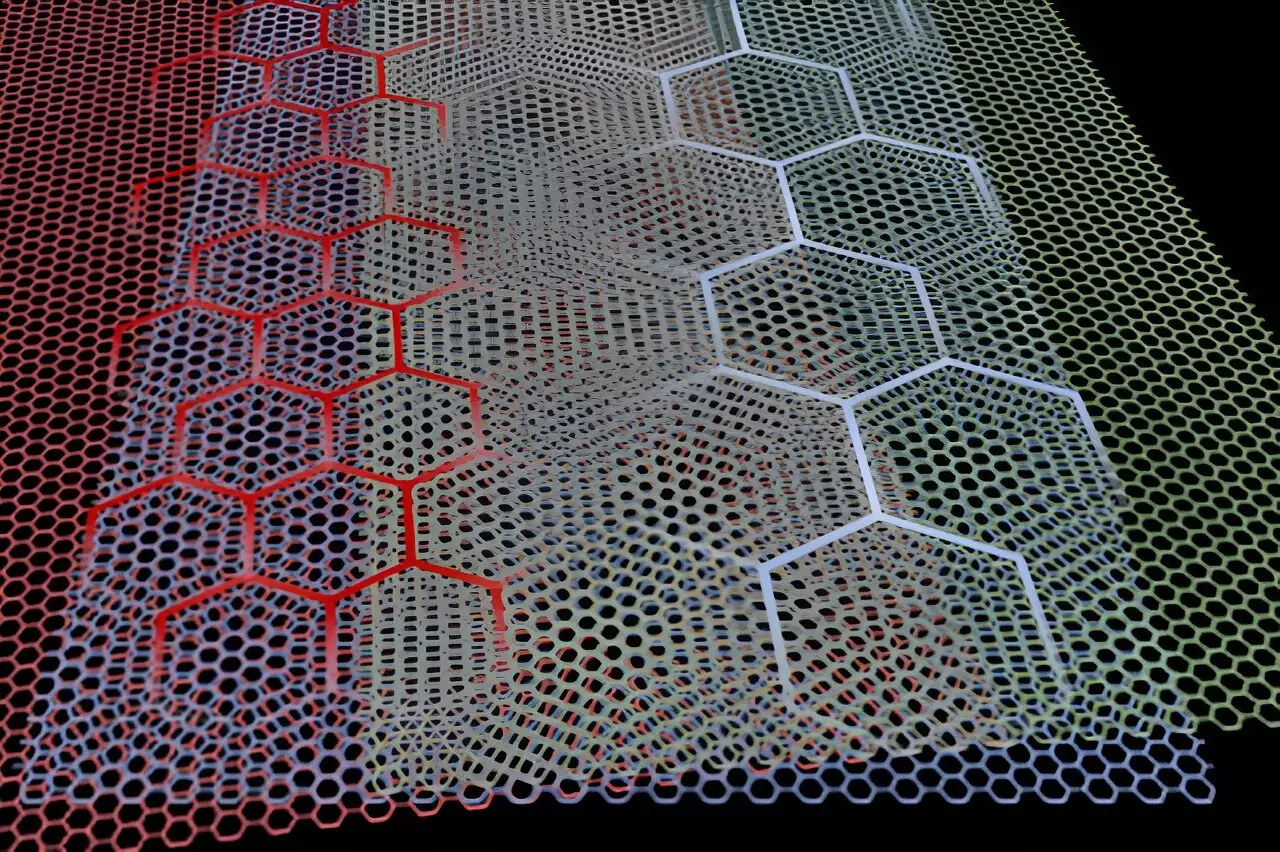Quasicrystals, a mysterious class of materials, have long puzzled scientists with their unconventional properties. However, researchers at MIT have recently made groundbreaking discoveries that could unravel the secrets of these enigmatic substances. By leveraging the principles of twistronics, a field pioneered at MIT, the scientists have successfully created atomically thin versions of quasicrystals that exhibit superconductivity and other remarkable phenomena. This innovative approach not only offers a new platform for studying quasicrystals but also presents an opportunity to unlock important applications and explore new realms of physics. In this article, we delve into the intricate details of this research and the implications it holds for the future.
The foundation of this pathbreaking work rests upon the convergence of two seemingly unrelated disciplines: twistronics and quasicrystals. Twistronics involves layering atomically thin materials at a slight angle, creating a moiré superlattice that influences the behavior of electrons. Quasiperiodic crystals, or quasicrystals, have a distinctive structure that lies between the regular arrangement of a crystal and the complete disorder of an amorphous material. Combining these two fields has led to unexpected connections and opened up new possibilities for scientific exploration.
In their research, the MIT team experimented with a moiré system comprising three layers of graphene. By twisting two of the graphene layers at different angles, they unexpectedly generated a quasicrystal. Quasicrystals possess intricate patterns that set them apart from crystals and amorphous materials, yet relatively little is known about their properties. This knowledge gap stems from the inherent difficulty in creating quasicrystals. However, the simplicity of the new platform created by the MIT researchers has the potential to revolutionize the study of these intriguing materials.
The breakthrough did not stop at the creation of quasicrystals; the team then tuned the moiré quasicrystal to exhibit superconductivity. Superconductivity, an extraordinary phenomenon where electric current flows without encountering any resistance, has vast implications for electronic device efficiency. However, it remains a complex concept that scientists are still endeavoring to understand. Through their innovative approach, the MIT researchers have unlocked a new pathway to explore this phenomenon and potentially pave the way for revolutionary advancements in electronics.
Moreover, the team observed evidence of symmetry breaking within the moiré quasicrystal. Symmetry breaking signifies strong interactions between electrons, a key factor that gives rise to exotic physics. By studying this phenomenon, physicists and quantum material scientists can gain valuable insights and push the boundaries of our understanding of fundamental physics.
To enhance their understanding of the moiré quasicrystal, the MIT researchers sought the expertise of Professor Ron Lifshitz from Tel Aviv University, an authority in the field of quasicrystals. This collaboration bridged distances and brought together scientists from different corners of the world. The insights gained from this international collaboration have contributed significantly to deciphering the complexities of the newly created material. However, despite the progress made, there are still lingering mysteries that continue to intrigue researchers.
The implications of this research stretch far beyond the confines of the laboratory. By delving into the realm of quasicrystals, scientists have the potential to unlock a plethora of applications and uncover entirely new physics. A deeper understanding of superconductivity could revolutionize electronic devices, enabling highly efficient energy transfer. Furthermore, the exotic properties arising from the interaction between electrons hold the key to developing advanced quantum materials with unprecedented functionalities.
The discovery of atomically thin quasicrystals through twistronics at MIT has brought forth a new dawn of possibilities. By merging two distinct fields, researchers have successfully shed light on the mysterious world of quasicrystals and the phenomena they exhibit. This newfound knowledge promises to transform the landscape of materials science and solid-state physics. With further exploration and collaboration, scientists may uncover groundbreaking applications and deepen our understanding of the fundamental laws governing the universe. As we stand at the crossroads of twistronics and quasicrystals, the journey into the unknown has only just begun, holding both excitement and promise for the future of science and technology.


Leave a Reply